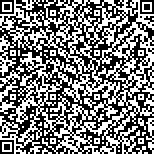孙殿荣,王淑婷,钱坤,等.4~12岁脑性瘫痪患儿粗大运动、手操作和交流功能的相关性分析[J].中华物理医学与康复杂志,2021,43(2):135-138
扫码阅读全文

|
| 4~12岁脑性瘫痪患儿粗大运动、手操作和交流功能的相关性分析 |
|
| |
| DOI:10.3760/cma.j.issn.0254-1424.2021.02.007 |
| 中文关键词: 脑性瘫痪 粗大运动功能分级系统 手功能分级系统 交流功能分级系统 |
| 英文关键词: Cerebral palsy Gross Motor Function Classification System Manual Ability Classification System Communication Function Classification System |
| 基金项目: |
|
| 摘要点击次数: 6312 |
| 全文下载次数: 6492 |
| 中文摘要: |
| 目的 分析4~12岁不同类型脑瘫患儿粗大运动功能、手功能和语言交流功能分级水平及其相关性。 方法 选取诊断及分型明确,年龄在4岁以上能够配合检查的脑瘫患儿318例(痉挛型双瘫132例、四肢瘫27例、偏瘫32例、不随意运动型54例,共济失调型41例、混合型32例),均进行粗大运动功能(GMFCS)、手功能(MACS)、交流功能(CFCS)的分级。用Spearman′s相关系数分析不同类型脑瘫的GMFCS、MACS和CFCS中每2个分类系统间的相关性和总的关联。 结果 脑瘫类型不同,GMFCS、MACS和CFCS三种功能分级系统的功能级别分布也不同,痉挛型双瘫、偏瘫的总体功能障碍最轻,而痉挛型四肢瘫、不随意运动型功能受限最严重。三个功能分类系统的相同分级的总一致性为39.31%(125/318)。三种功能分级呈中度相关,在不同脑瘫类型间的相关程度也不同。GMFCS水平与MACS水平在四肢瘫和不随意运动型患儿相关性最高(rs四肢瘫=0.95;rs不随意=0.93, P<0.05),在偏瘫患儿中不具相关性(P>0.05)。GMFCS水平与CFCS在偏瘫和四肢瘫儿童高度相关(rs偏瘫=1.00、rs四肢瘫=0.82,P<0.05),但是在双瘫患儿中不具相关性(rs=0.15, P>0.05)。MACS与CFCS在四肢瘫和混合型患儿的相关性最高(rs四肢瘫=0.86和rs=0.82, P<0.05),但是双瘫和偏瘫患儿中未发现相关性(P>0.05)。 结论 脑瘫类型不同,三种功能分级系统的功能级别的分布不同,且三种功能分类系统在不同脑瘫类型的相关性也不同,其联合应用可对脑瘫患儿日常生活中的表现提供更全面功能框架的描述。 |
| 英文摘要: |
| Objective To investigate the gross motor function, manual ability and language communication of children with cerebral palsy (CP) and their correlation. Methods A total of 318 children with CP (132 with spastic diplegia, 27 with spastic quadriplegia, 32 with spastic hemiplegia, 54 with dyskinesia, 41 with ataxia and 32 children with multiple difficulties) aged 4 to 12 years were classified according to the Gross Motor Function Classification System (GMFCS), the Manual Ability Classification System (MACS), and the Communication Function Classification System (CFCS). Spearman correlation coefficients were used to analyze the correlation among the three ratings. Results Only 125 of the 318 children (39%) had the same classification level according to all three scales, showing moderate correlation and different levels for patients with different types of disability. The GMFCS and MACS levels of the subjects with spastic quadriplegia and those with dyskinesia were highly correlated. The GMFCS and CFCS levels of the hemiplegic children and those with spastic quadriplegia were also highly correlated. The MACS and CFCS levels were strongly correlated for children with spastic quadriplegia and multiple disabilities. Conclusions The functioning of children with CP differs with their CP subtype. Correlations among the three functional assessments also differ for children with different subtypes. Combining the three classification systems provides a more comprehensive picture of the children′s ability to function in daily life. |
|
查看全文
查看/发表评论 下载PDF阅读器 |
| 关闭 |